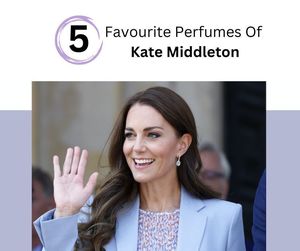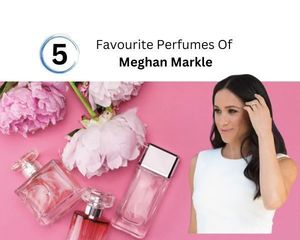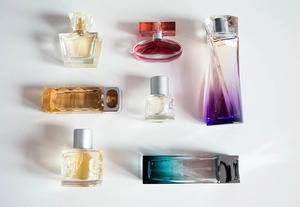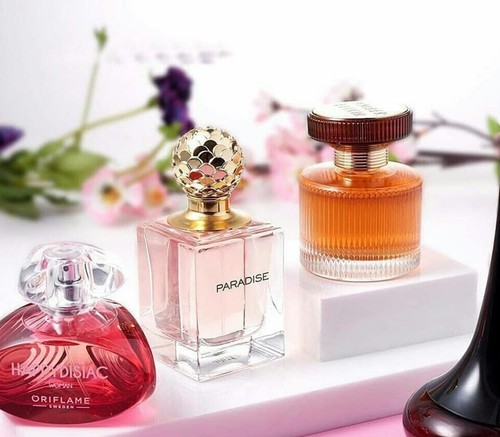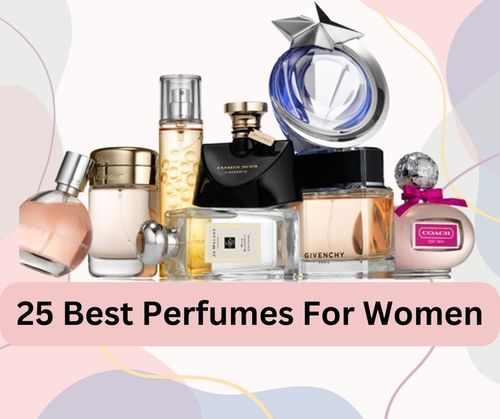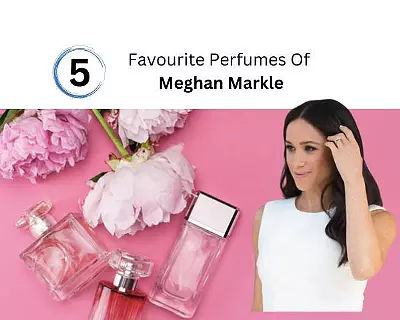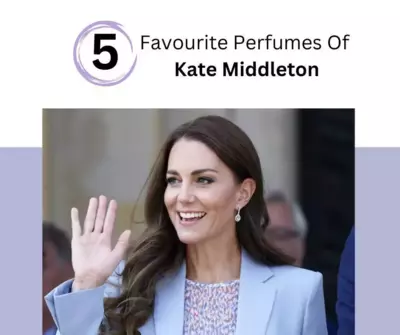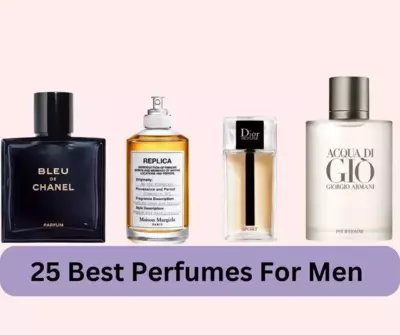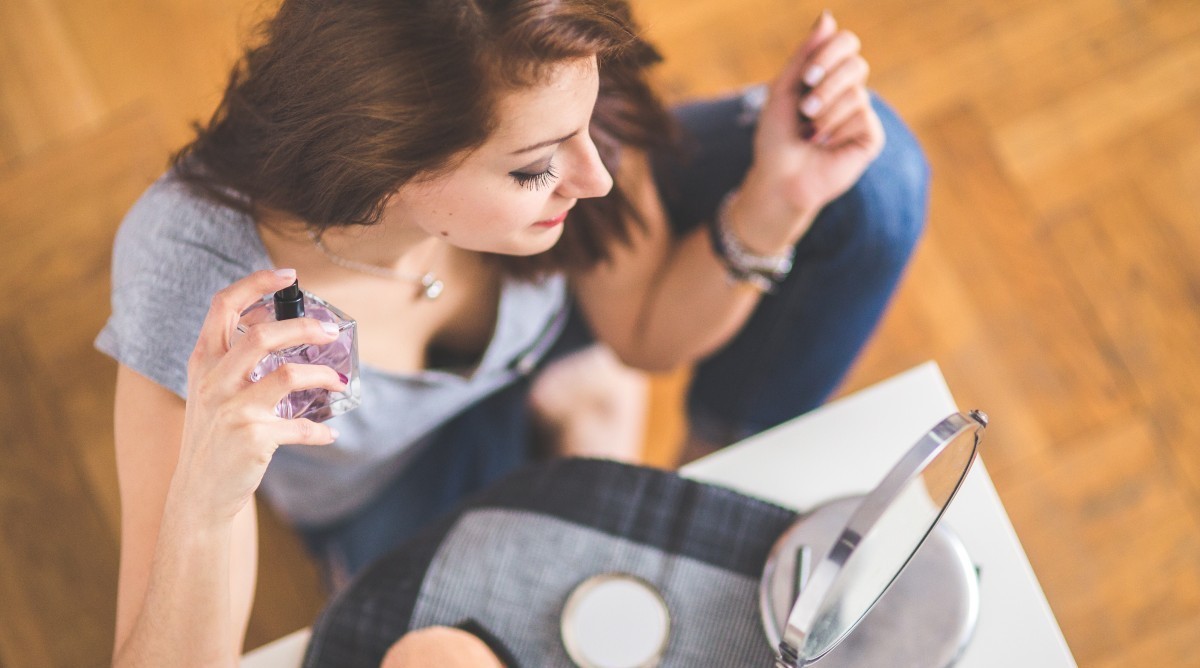Perfumes 101: Your Guide To All Types Of Perfumes
Sheena Shah
Updated At 23 Dec 23
The art of perfumery is nothing less than creating a masterpiece in a bottle. Every scent note can tell a tale or evoke a long-lost memory. Whether you're a seasoned fragrance connoisseur or just beginning to explore the magic in different types of perfumes, this guide will take you through the basics.
From fragrance pyramids and fragrance families to all types of perfumes, scroll down to unlock the secrets behind the allure and elegance of perfumes. As Coco Chanel, the famed designer behind Chanel, rightly said,
“No Elegance is possible without perfume. It is the unseen, unforgettable, ultimate accessory.”
What Is A Perfume?
A perfume is a fragrant liquid generally made from a mixture of essential oils, aromatic compounds, solvents, and fixatives. In simple words, it is a liquid that smells really nice. It's made by mixing essential oils taken from plants, flowers, fruits, or spices with other ingredients.
These oils give the perfume its unique scent. There are also some chemicals found in nature or made synthetically in a lab that help make the smell last longer. Alcohol is usually added to help mix the essential oils and aroma compounds together.
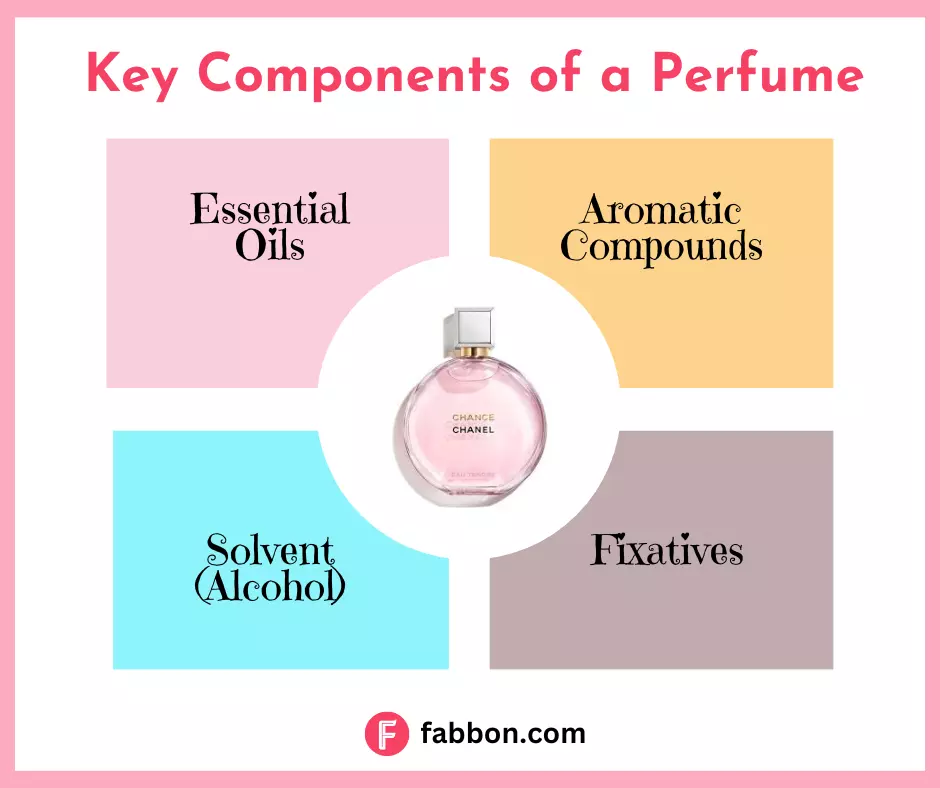
The 4 key components of a perfume include:
1) Essential Oils: They contribute to the primary scent of the perfume. Essential oils are extracted from plants, flowers, fruits, spices, etc.
2) Aromatic Compounds: They are synthetic or natural chemicals that enhance and stabilize the fragrance.
3) Solvents: Solvents are typically alcohol, which helps dissolve and dilute the essential oils and aroma compounds.
4) Fixatives: They are the substances that help slow down the evaporation rate of the perfume, making it last longer.
There are different types of perfumes, like ones that are light and fresh for everyday use and others that are stronger and last longer for special occasions. Perfumes have been around for a very long time, and it's a way for people to express themselves and create pleasant experiences through smell.
What Is The Fragrance Pyramid?
It is interesting to note that perfume isn't a static scent. It changes over time as different notes come to the forefront and others fade away. This layered structure adds complexity to the fragrance, and a fragrance pyramid can help explain how a perfume smells over time.
The fragrance pyramid has three sections: the top, the middle, and the base.
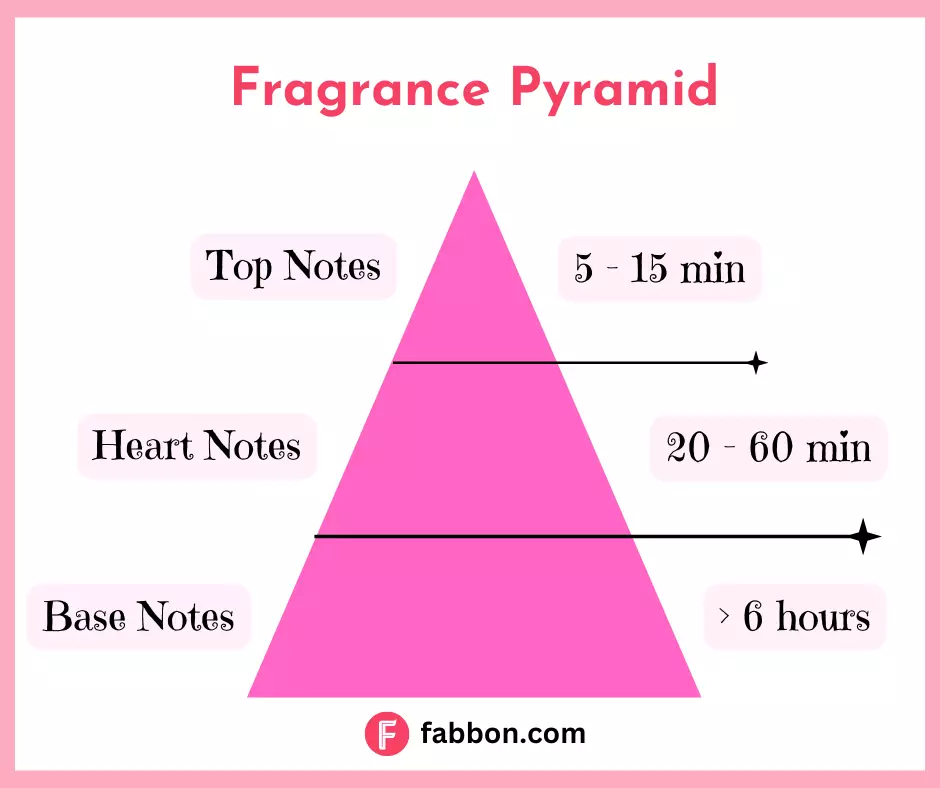
Top Notes: These are the scents you immediately notice when you first smell the perfume. They are like the first impression and tend to be light and refreshing.
Middle Notes: Also called heart notes, these scents emerge after the top notes start to fade. They make up the core or heart of the fragrance and develop a little bit later.
Base Notes: These are the foundation of the fragrance. Base notes appear after the top and middle notes have settled and last the longest. They provide depth and stability to the perfume and are essential for its lasting effect.
The fragrance pyramid can help us understand how a perfume unfolds on the skin over an extended period. This progression adds to the complexity and charm of a well-crafted perfume. The top notes usually contain citrus, fruity, and herbal notes. Floral, spicy, and sometimes fruity notes are common in the middle layer. Base notes are more robust and last the longest, having elements like wood, musk, and oriental spices.
While buying a perfume, make sure to check out our guide so that you know how to spot a fake perfume. We list 7 top ways to identify a real perfume. These are easy but often missed out by many.
7 Types of Perfume
Perfumes come in various types, each offering a unique experience based on the concentration of essential oils. Let's look at the 7 types of perfumes below, the concentration of essential oils they hold and how long they can last.

1. Parfum
With a concentration of 20-30% essential oils, Parfum stands at the pinnacle of the fragrance hierarchy. Also known as Extrait de Parfum or pure perfume, they are the go-to choice for special occasions where a lasting impression is desired. Parfum, carrying perfumes' rich and heavy nature, represents luxury and longevity.
Pro Tip: If you have sensitive skin, try Parfum as they have less alcohol and can provide a gentle and luxurious experience. Additionally, a little goes a long way due to its high concentration. A couple of spritzes are sufficient for an all-day scent.

2. Eau de Parfum (EDP)
Eau de Parfum, or Eau de Perfume, comes next in the fragrance spectrum. With a concentration of 15-20% essential oils, it balances elegance and affordability. The slightly lower concentration makes it more versatile for everyday use.
It is a popular choice for those seeking a long-lasting fragrance without the higher price tag of pure perfumes. For lingering fragrance, spritz Eau de Parfum on your hairbrush and run it through your hair. According to Clinique,
"Rather than applying directly to your hair (the alcohol content in your fragrance can dry out your scalp) spray your hairbrush, then run it through your hair."

3. Eau de Toilette (EDT)
Eau de Toilette presents a lighter and more accessible fragrance option. The essential oil concentrations range from 5 to 15% for this perfume type. Eau de Toilette has a relatively shorter duration, lasting between 2 to 3 hours. Typically housed in spray bottles, this fragrance category is the most commonly used due to its affordability and widespread availability.
Pro Tip: Apply a small amount of unscented moisturizer before spraying Eau de Toilette to make it last longer.

4. Eau de Cologne (EDC)
Eau de Cologne features an essential concentration between 2 and 4%. It is usually considered a masculine formula with its scent profile, but certain variations are available for women. This perfume type is known for its refreshing qualities, making it a popular choice for daytime use.
Given its lower concentration of essential oils, Eau de Cologne tends to be more affordable. However, its light nature means it lasts a shorter duration, generally up to 2 hours.
Pro Tip: Apply Eau de Cologne immediately after a shower to maximize its refreshing effect. Keep in mind that it lasts for a short duration, so a midday reapplication might be refreshing.

5. Eau Fraiche
Eau Fraiche, translating to "fresh water," is the most diluted fragrance category. It has essential oil concentrations of approximately 1 to 3%. As the name suggests, the primary ingredient in Eau Fraiche is water. This category is designed for those who prefer a subtle and fleeting fragrance, often used for a quick refresh throughout the day.

6. Perfume Oils
Unlike traditional perfumes, Perfume Oils use pure oil as a base instead of water or alcohol. The concentrations of essential oils in perfume oils can vary, with most containing up to 20% fragrance essential oils, while a carrier or base oil makes up the remaining blend. The absence of alcohol and water enhances the longevity of perfume oils.

7. Body Mists
Although not as concentrated as conventional perfumes, Body Mists offers a delightful and refreshing option. With a typical concentration of 1-3% essential oils, these mists provide a light and airy fragrance experience. They are packaged in spray bottles, making them ideal for a quick pick-me-up or a subtle addition to your daily routine.
Pro Tip: You can spritz body mist in the air and walk through it for a gentle and even application.
Interested to find out the top celebrity perfumes from Paris Hilton, Kim Kardashian, Elizabeth Taylor and many other celebs, then do check out our guide as we list 25 top ones from these popular personalities.
Perfume Strength
Perfume strength indicates how strong and long-lasting a perfume smells. The strength of a perfume usually depends on the concentration of essential oils it has. More the amount of essential oils in a perfume, the stronger and longer it will last. So, when you see words like Parfum or Eau de Toilette on a perfume bottle, it's telling you how strong that perfume is.
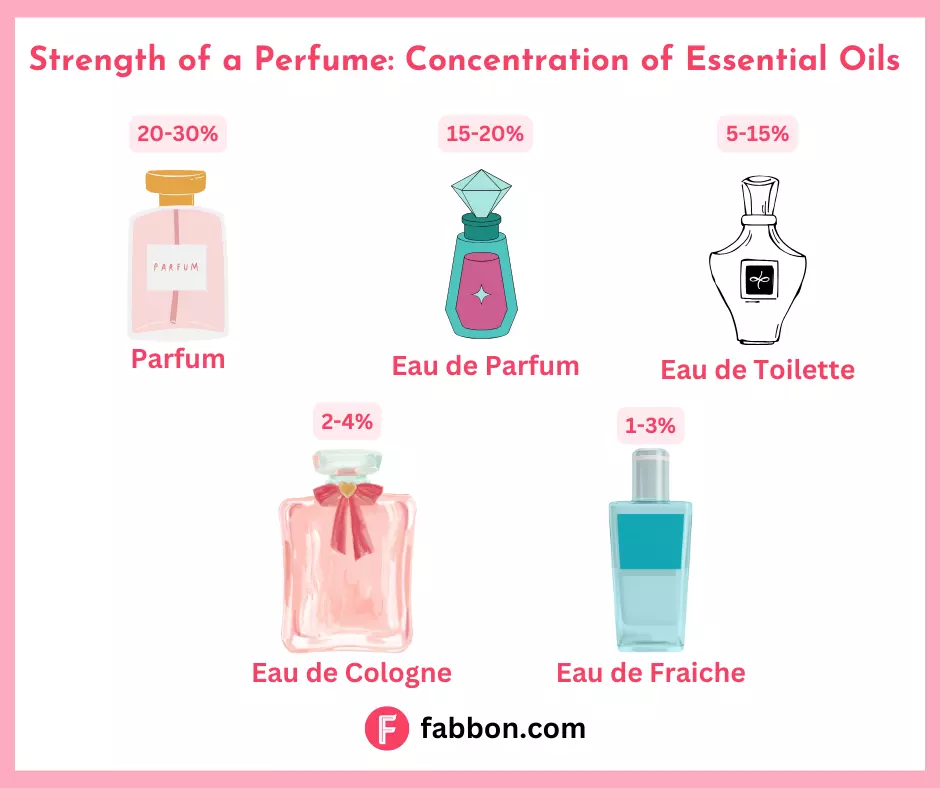
Parfum has a high concentration of essential oils and lasts a really long time – perfect for special days. Eau de Parfum is a bit lighter but still stays for a good while. Eau de Toilette is lighter and great for everyday use. Eau de Cologne is like a quick burst of freshness, good for daytime.
Eau Fraiche is the lightest, giving a quick, gentle smell. In contrast to traditional perfumes, we have Perfume Oils that do not have an alcohol/water base and can last for 6-8 hours. Body Mists are light and perfect for a subtle scent. Thus, understanding perfume strength helps you pick the perfect perfume, i.e., for how strong and how long you want your favourite scent to stick around!
In addition to choosing a perfume with high essential oils for a long-lasting scent, you can try spritzing on your pulse points to make it stay longer. Pulse points include your wrists, the nape of your neck, behind your ear or knees, and inside your elbows. Vince Spinnato, a celebrity fragrance developer, explains
"These [areas] react with the natural fluctuations in your body temperature and, in turn, emit your scent throughout the day."
What are Fragrance Families?
Fragrance families is a concept that organizes scents into four main groups: floral, oriental, woody, and fresh. This arrangement is usually depicted in the form of a Fragrance Wheel crafted by scent expert Michael Edwards. This Fragrance Wheel or Fragrance Chart acts as a compass for passionate perfume enthusiasts globally.
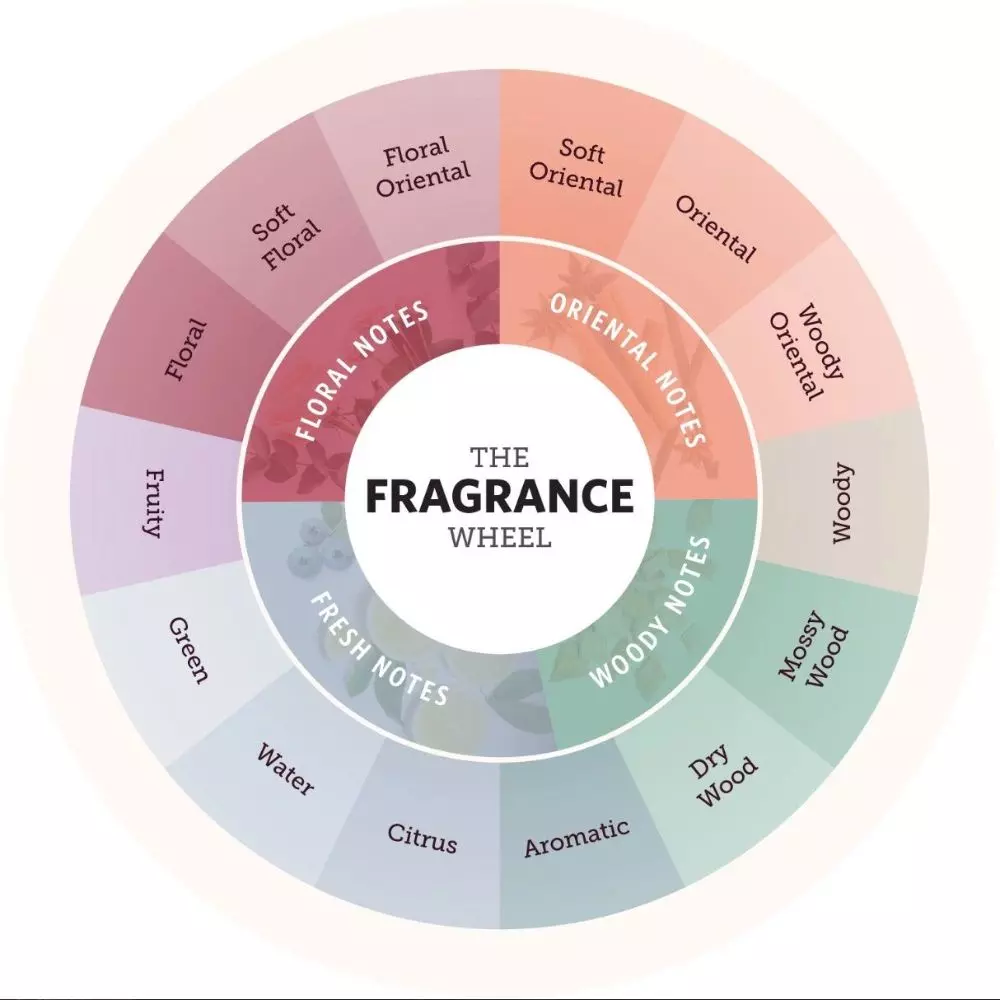
1. Floral: The floral family sits at the top in the world of fragrances. It captures the essence of freshly cut flowers. Within this family, you'll find subfamilies like Fruity, Floral, and Soft Floral, each offering unique combinations.
2. Oriental: Oriental scents carry herbal, spicy, and resinous notes. Subfamilies like Soft Oriental, Oriental, and Woody Oriental form a part of this rich category. This fragrance family holds the vibe of exotic charm.
3. Woody: The Wood family blends incense-like fragrances with dry cedar notes. It carries a comforting fusion that evokes a sense of luxury. Woods, Mossy Woods, and Dry Woods are the subfamilies of this category.
4. Fresh: The fresh family is a breath of refreshing air for those who crave aromatic freshness with underlying woodsy tones. Citrus, Green, and Water are the subfamilies of this lively category. You can find various options in the fresh fragrance family, such as uplifting citrus notes or the clean essence of water.
How to Choose the Best Perfume for You?
To choose the best perfume while shopping, there are certain aspects that you should consider, such as your preferences, lifestyle, and the occasion. We have listed a few things to keep in mind while shopping for a perfume.
Your Preference Matters: Identify the scents you love, whether floral, fruity, woody, or oriental. Knowing your preferred fragrance family narrows down your choices.
Test Before You Buy: Perfumes can smell different on different people due to skin chemistry. Test a fragrance on your skin to ensure it blends well with your natural scent before buying it.
Understand the Concentrations: If you prefer a scent that lasts all day, go for higher concentrations like Parfum or Eau de Parfum. For a lighter touch, choose Eau de Toilette or Eau Fraiche.
Budget Considerations: Eau de Toilette and Eau Fraiche are usually more budget-friendly than Parfum or other perfumes with higher concentrations of essential oils. However, consider the longevity and how often you might need to reapply.
Trust Your Gut: Pay attention to your immediate reaction when you smell a perfume. If it makes you feel good and resonates with you, it's likely a good choice.
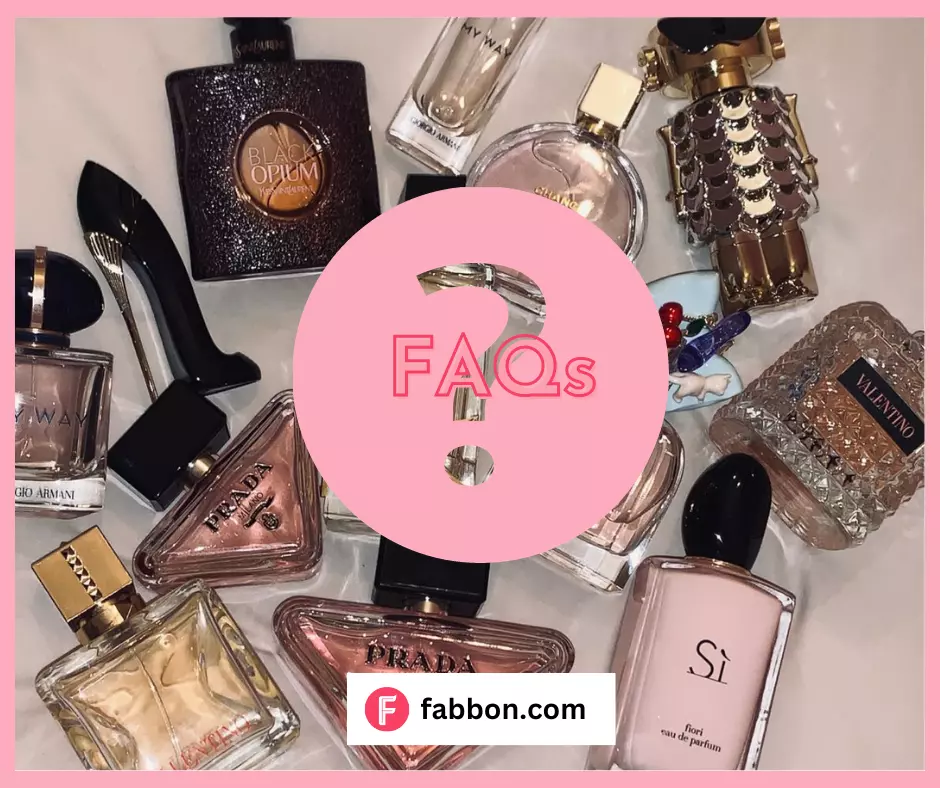
FAQs on Perfumes
Q. Are there any tips for testing perfumes at a store?
When testing perfumes at a store, try to limit the number of scents you test at once to avoid olfactory fatigue. Also, test the perfume on your skin rather than on paper to experience how the fragrance interacts uniquely with you.
Q. How do I choose the best perfume for different seasons?
Lighter, fresh scents are great for spring and summer, while warmer, spicier fragrances suit fall and winter.
Q. Can I layer different perfumes?
Yes, you can layer different perfumes but it's essential to choose complementary scents. Start with a neutral base and layer with scents from the same fragrance family for a harmonious blend.
Q. How long does a perfume typically last?
The longevity of a perfume depends on its concentration. Parfum lasts the longest, followed by Eau de Parfum, Eau de Toilette, and Eau de Cologne.
Q. How can I make my perfume last longer?
To make your perfume last longer, you should apply perfume to pulse points, moisturize your skin beforehand, and consider layering with matching scented lotions or oils.
Q. Can perfumes expire?
Yes, perfumes can expire and have a shelf life, typically around 3 to 5 years. Store them in a cool, dark place to preserve their quality.
Q. Are there sustainable or eco-friendly perfume options?
Yes, there is a growing trend in sustainable and eco-friendly perfumery. Look for brands that use ethical sourcing, recyclable packaging, and eco-conscious production practices, such as Dedcool, Henry Rose, Sana Jardin
Q. Can I create my own signature fragrance?
Absolutely! Experiment with blending different scents or layering multiple perfumes to create a unique fragrance that reflects your personality.
Related Articles


